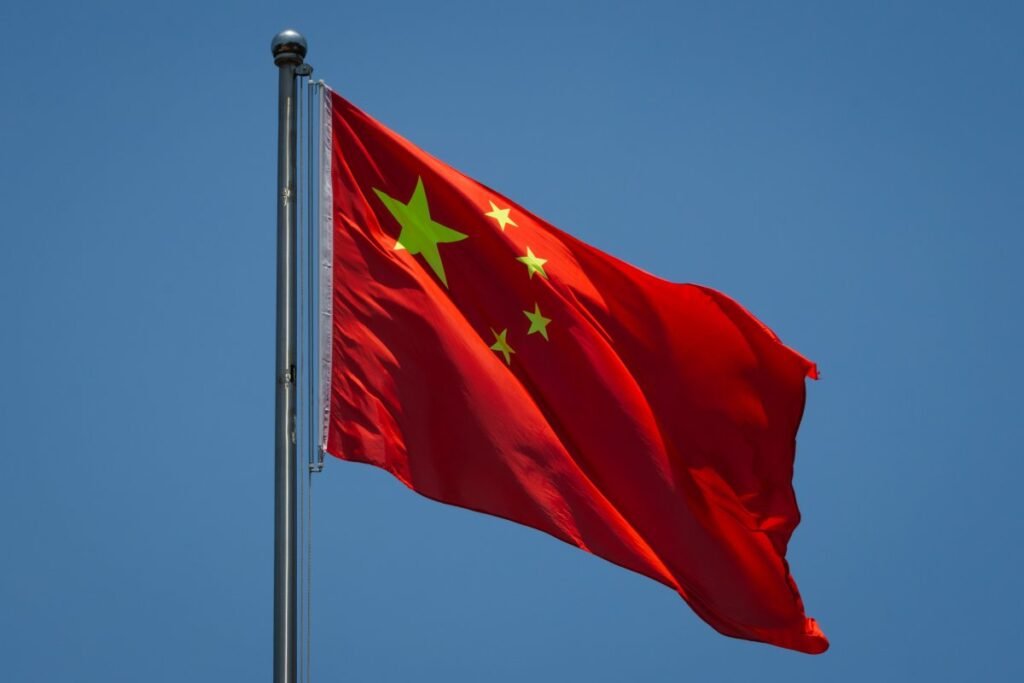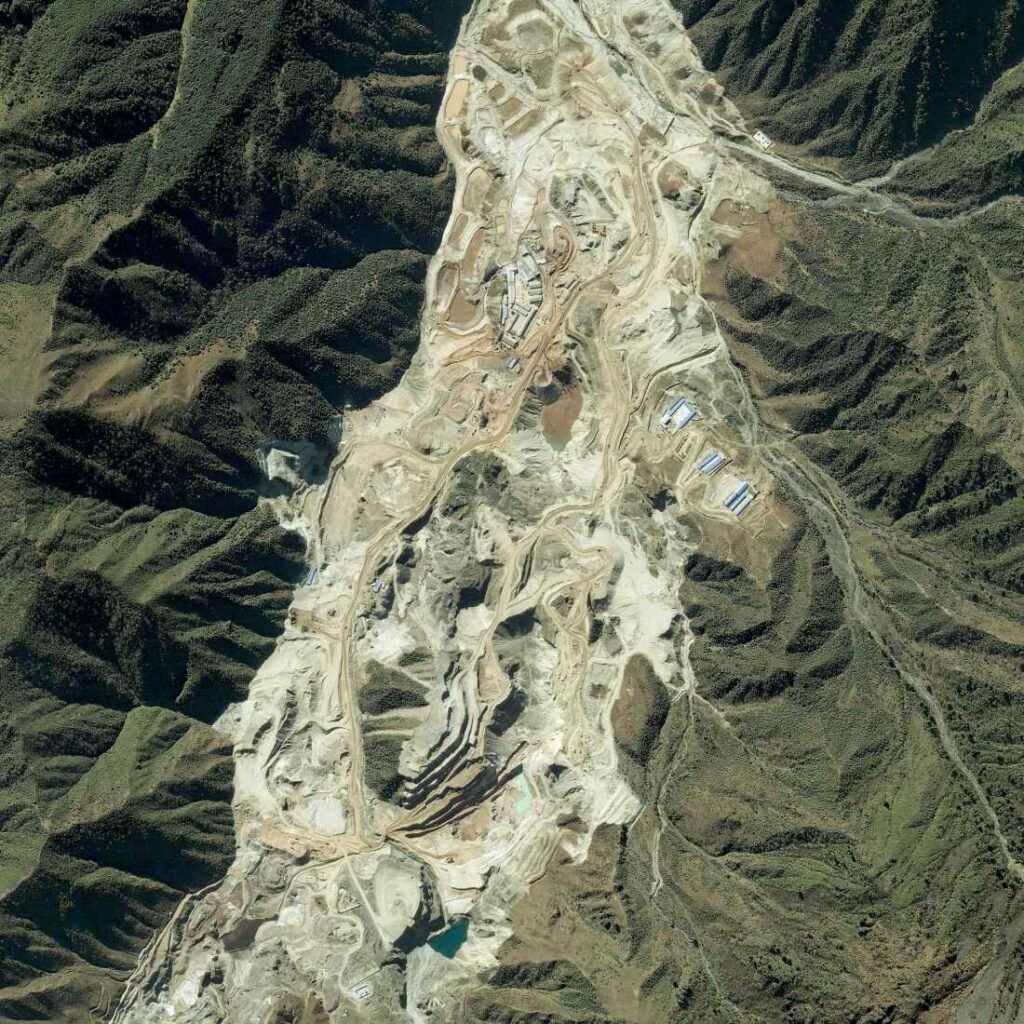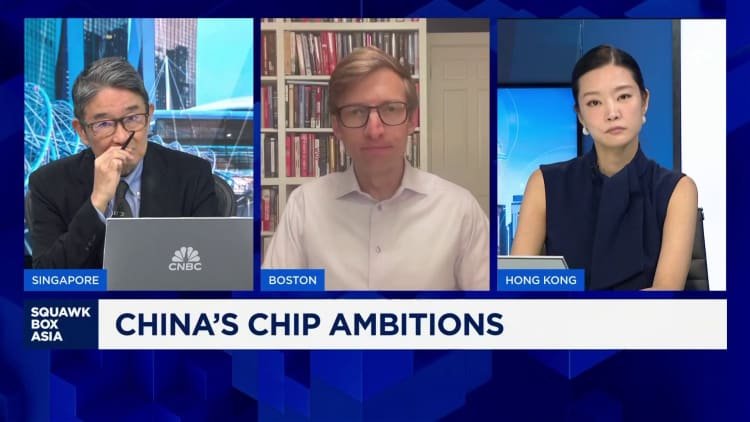A drone model intended for Russia’s war effort includes components from a Chinese firm, which had previously said it would not provide equipment in the war in Ukraine, it has been reported.
The Defense Intelligence of Ukraine (DIU) agency said it had revealed a new drone that Moscow would use, which is similar to the Iranian-made Shahed-136 drone, although much smaller.
It said that almost half of the components come from a single Chinese firm, CUAV Technology, which had announced in October 2022 restrictions on its products to Ukraine and Russia, curbing their military use.
Newsweek has contacted CUAV Technology for comment.

This image from September 19, 2024, shows Vladimir Putinand his officials at an exhibition of Orlan-10 UAV drones at the Special Technology Center in Saint Petersburg.
Why It Matters
Russia is stepping up its drone production as it continues to bombard Ukrainian infrastructure and use the devices on the battlefield.
A propaganda video showcased a drone factory near Kazan in the Tatarstan region, described as the world’s biggest, amid a warning by Germany’s defense ministry that Russia could launch 2,000 of the devices in a single night by November.
China has always denied supplying drones or weapons components to Russia, but reports that its firms are contributing to this effort will raise questions about the effectiveness of secondary sanctions.
What To Know
The DIU unveiled on a war and sanctions portal, which details foreign weapons components, the inner workings of a new Russian drone that it says Moscow uses as a reconnaissance and decoy device to detect the positions of Ukrainian air defense.
It said that the device model named UAV (unmanned aerial vehicle) CBTS.611000 has a delta-wing fuselage similar to but smaller than the Shahed-136 (Geran-2), Iranian-designed drone, which has wreaked destruction in Ukraine.
China supports russian terrorism – thus, China directly supports the fight against Europe.
The new russian drone consists almost entirely of Chinese components, — GUR.
The intelligence agency has published data on the drone, which the russians use as a decoy, reconnaissance… pic.twitter.com/1mpwMf9Kkh
— Jürgen Nauditt 🇩🇪🇺🇦 (@jurgen_nauditt) July 22, 2025
The DIU said that every component is of Chinese origin, almost half of which come from a single firm, CUAV Technology. These components include a flight controller with autopilot, navigation modules and antennas and an airspeed sensor. The drone can carry a warhead of up to 15 kilograms (35 pounds), the DIU added.
DIU said in October 2022 that CUAV Technology had announced restrictions on supplying its products to Ukraine and Russia.
German Major General Christian Freuding said in a podcast that China has now completely stopped exporting drone parts to Ukraine and is instead supplying Russia.
Meanwhile, back in June, Oleh Alexandrov, spokesman for Ukraine’s foreign intelligence service, told Politico that Chinese manufacturers would continue to supply Russia for their drone production.
This would include supplying hardware, electronics, navigation, optics, and telemetry systems, motors, microcircuits, processor modules, antenna field systems, control boards, and navigation systems, he said.
What People Are Saying
Pro-Ukrainian X user Jürgen Nauditt posted that the DIU report shows “China supports Russian terrorism – thus, China directly supports the fight against Europe.”
Pro-Ukrainian BSky B user Jalenska posted: “I hope we’ll condemn China with strong words and summon ambassadors.”
Military News UA on X: “Ukrainian intelligence has revealed that a new Russian drone, used for decoy, reconnaissance and light strikes, relies almost entirely on Chinese components.”
Oleh Alexandrov, spokesman for Ukraine’s foreign intelligence service, told Politico in June: “Officially, China sticks to all the rules. Yet only officially.”
What Happens Next
Reports of Chinese involvement in Russia’s drones will add to scrutiny of other countries playing a role in helping Moscow’s war effort. Kyrylo Budanov, head of DIU, said that Russia’s ally North Korea currently supplies up to 40 percent of Moscow’s ammunition.





